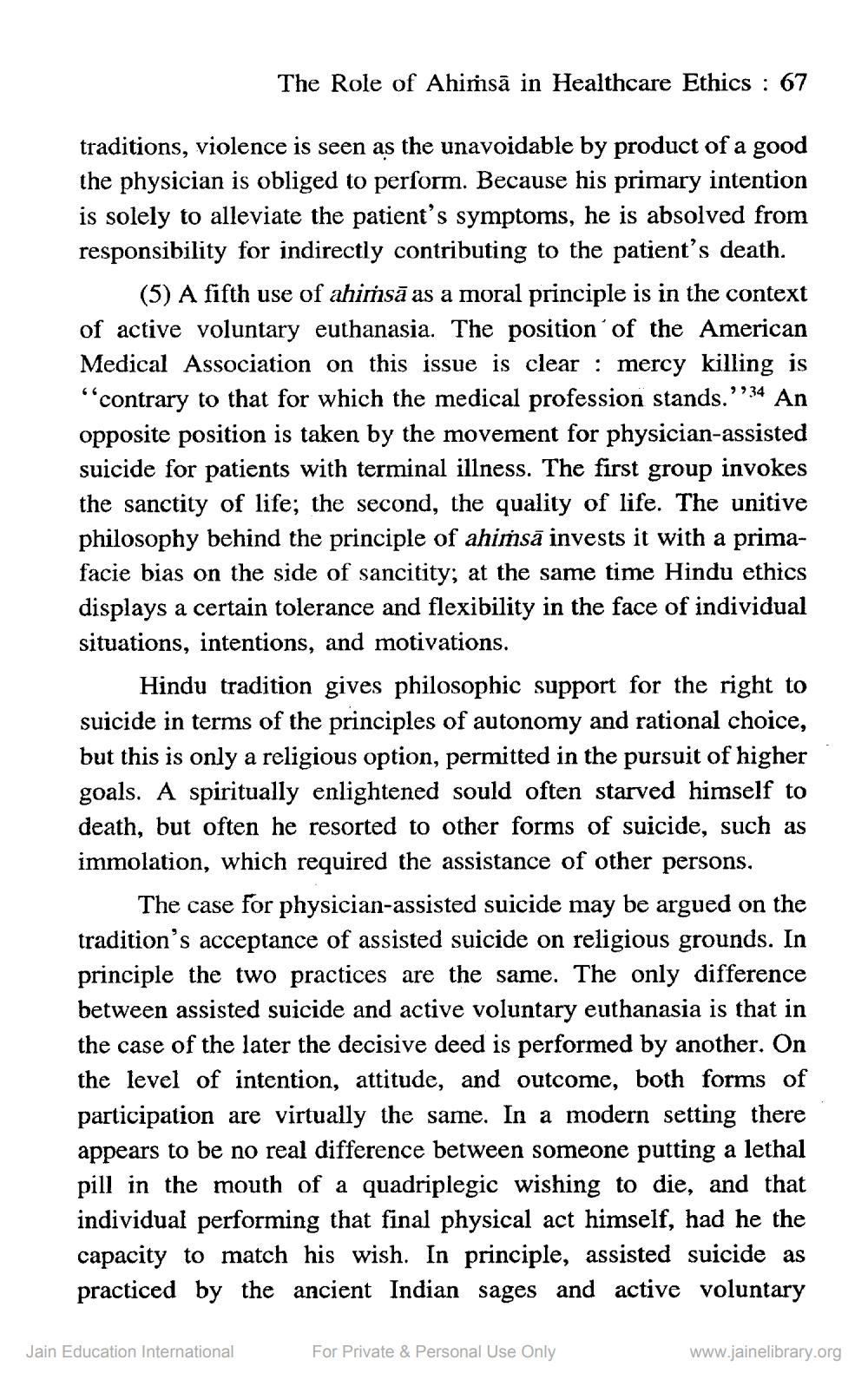________________
The Role of Ahimsā in Healthcare Ethics : 67
traditions, violence is seen as the unavoidable by product of a good the physician is obliged to perform. Because his primary intention is solely to alleviate the patient's symptoms, he is absolved from responsibility for indirectly contributing to the patient's death.
(5) A fifth use of ahimsā as a moral principle is in the context of active voluntary euthanasia. The position of the American Medical Association on this issue is clear : mercy killing is “contrary to that for which the medical profession stands.”? 34 An opposite position is taken by the movement for physician-assisted suicide for patients with terminal illness. The first group invokes the sanctity of life; the second, the quality of life. The unitive philosophy behind the principle of ahiṁsā invests it with a primafacie bias on the side of sancitity; at the same time Hindu ethics displays a certain tolerance and flexibility in the face of individual situations, intentions, and motivations
Hindu tradition gives philosophic support for the right to suicide in terms of the principles of autonomy and rational choice, but this is only a religious option, permitted in the pursuit of higher goals. A spiritually enlightened sould often starved himself to death, but often he resorted to other forms of suicide, such as immolation, which required the assistance of other persons.
The case for physician-assisted suicide may be argued on the tradition's acceptance of assisted suicide on religious grounds. In principle the two practices are the same. The only difference between assisted suicide and active voluntary euthanasia is that in the case of the later the decisive deed is performed by another. On the level of intention, attitude, and outcome, both forms of participation are virtually the same. In a modern setting there appears to be no real difference between someone putting a lethal pill in the mouth of a quadriplegic wishing to die, and that individual performing that final physical act himself, had he the capacity to match his wish. In principle, assisted suicide as practiced by the ancient Indian sages and active voluntary
Jain Education International
For Private & Personal Use Only
www.jainelibrary.org




